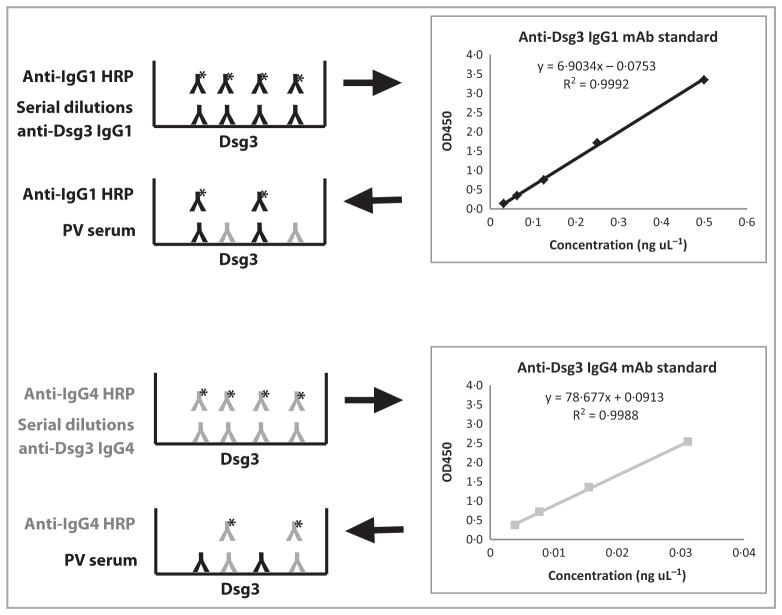Fig 1.
Diagram of desmoglein (Dsg)-specific subclass enzyme-linked immunosorbent assay (ELISA). Serial dilutions of IgG1 or IgG4 recombinant human monoclonal antibodies (mAbs) expressing the same anti-Dsg3 variable region were incubated on Dsg3-coated wells and detected with subclass-specific horseradish peroxidase (HRP)-conjugated secondary antibodies to generate a quantitative standard curve. At the same time, pemphigus vulgaris (PV) serum was incubated on Dsg3-coated wells and developed with either IgG1 or IgG4-specific secondary antibodies. The resulting OD450 value was used to calculate the concentration of anti-Dsg3 subclass-specific antibody in each patient sample based on the equation from the standard curve regression analysis. A similar design was used for Dsg1-specific subclass ELISA, except that anti-Dsg1 mAb standards and pemphigus foliaceus sera were incubated on Dsg1-coated wells.

